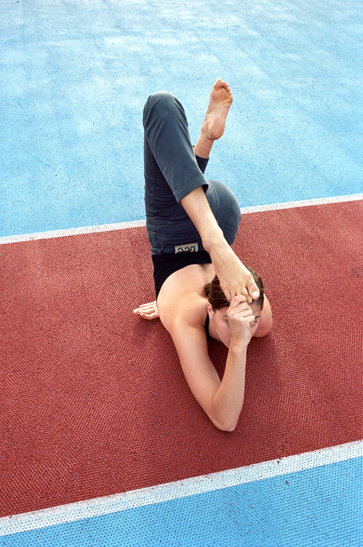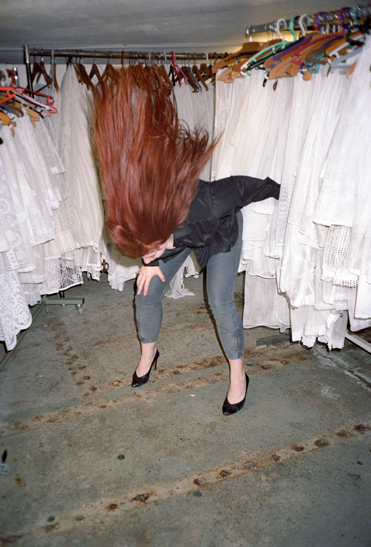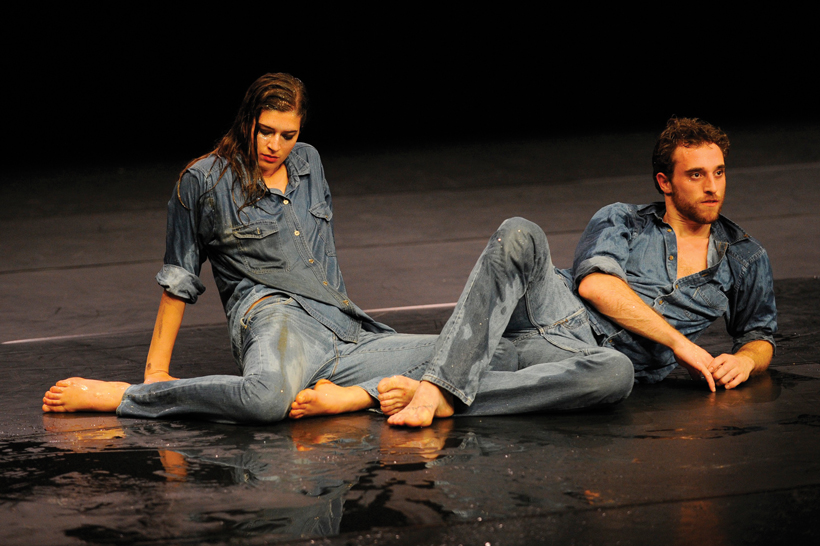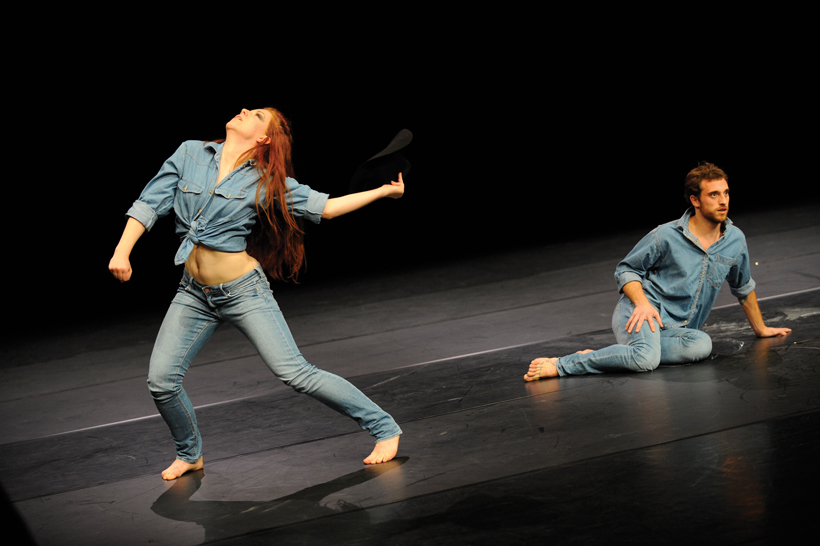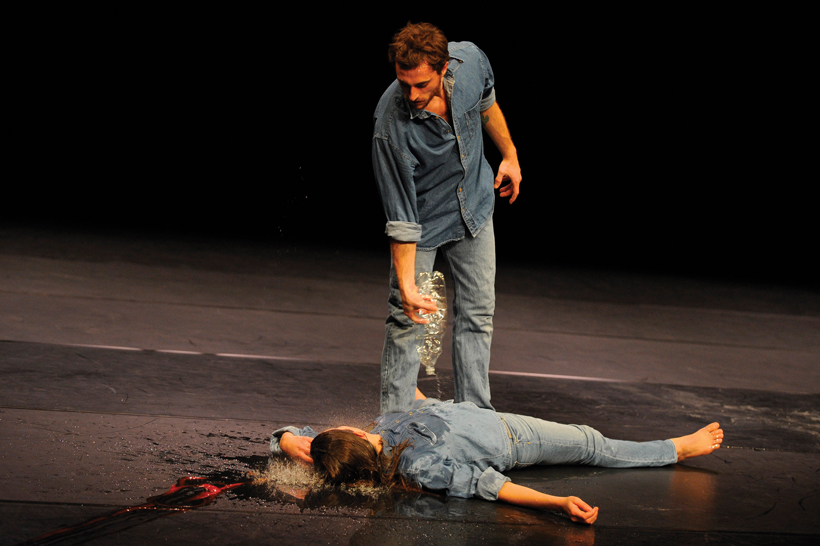Bluff
Three performers appear one after another in a rudimentary setting of an
almost empty stage, a black box marked with a small square where the
action takes place. An exchange of gestures that at first might seem
personal, then again conventional, repeatable, worn, almost ironical.
Would it be a lesson in bluffing?
What constitutes the identity of contemporary body and what is at
stake here? Stretched between the expression that belongs to someone
else and the embodied experience of self-perception, the body steps out
of the territory defined by these two opposing modes. The body keeps
transcending its own fixed condition and continues
to change, moving towards new forms and attitudes.
Drawing from the potential of illusion and mirroring, the performance
involves familiar gestures and actions that in their use of repetition,
accumulation and systematic but small alterations remind
of magic tricks. The effects seem to appear almost imperceptibly and
defy what the viewers might anticipate. Isolating and transferring
specific gestures from sequence to sequence during the performance
enables a build-up of a short-lived vocabulary that can be exchanged and
modified between the performers. Shifts and repetitions have an almost
hypnotic effect on viewers, producing a feeling of detachment and
instantaneous moments of loss of attention. Bluff plays on subconscious
gaps in perception that get completed by perception habits grounded
in various individual social and cultural backgrounds of the members
of the audience.
Bluff is a way of showing how contemporary body becomes what it is.
Does the body strive to be something else, something
more than what it learned to be? The setup of this experiment involves
three individuals, each of whom has exercised and mastered a specific
body language. Individual gestures and types of movement will be
deconstructed, passed from one person to another and further. Bluff will
culminate in one dance solo, built on sequences of movements brought
together by three different performers. This solo will try to give an
embodied answer to the question: is there a dance that explains
itself?
CONCEPT AND CHOREOGRAPHY Alexandra Bachzetsis // PERFORMANCE Saga Sigurdardottir, Island, Franziska Aigner, Austria, Gilles Polet, Belgium // GRAPHIC DESIGN and collaboration concept Julia Born // MUSIC Richard Dorfmeister // LIGHT Tina Bleuler and Patrick Rimann // COSTUME Patrizia Jäger // ASSISTANCE CHOREOGRAPHY Otobong Nkanga // SOUND technician Lucretia Ehrensperger // PHOTOGRAPHY Melanie Hofmann // ASSISTANCE Amber Hickey // PRODUCTION Association All Exclusive Zürich, Marion Baumgartner // PROMOTION AND DIFFUSION Sarah de Ganck // CO-PRODUCED with Theaterhaus Gessnerallee Zürich und Kaserne Basel // SUPPORTED BY Präsidialdepartment der Stadt Zürich, Swiss Arts Council Pro Helvetia, Fachstelle Kultur Kanton Zürich, Kulturelles BL, LUMA Foundation, Migros-Kulturprozent, Ernst Göhner Stiftung
